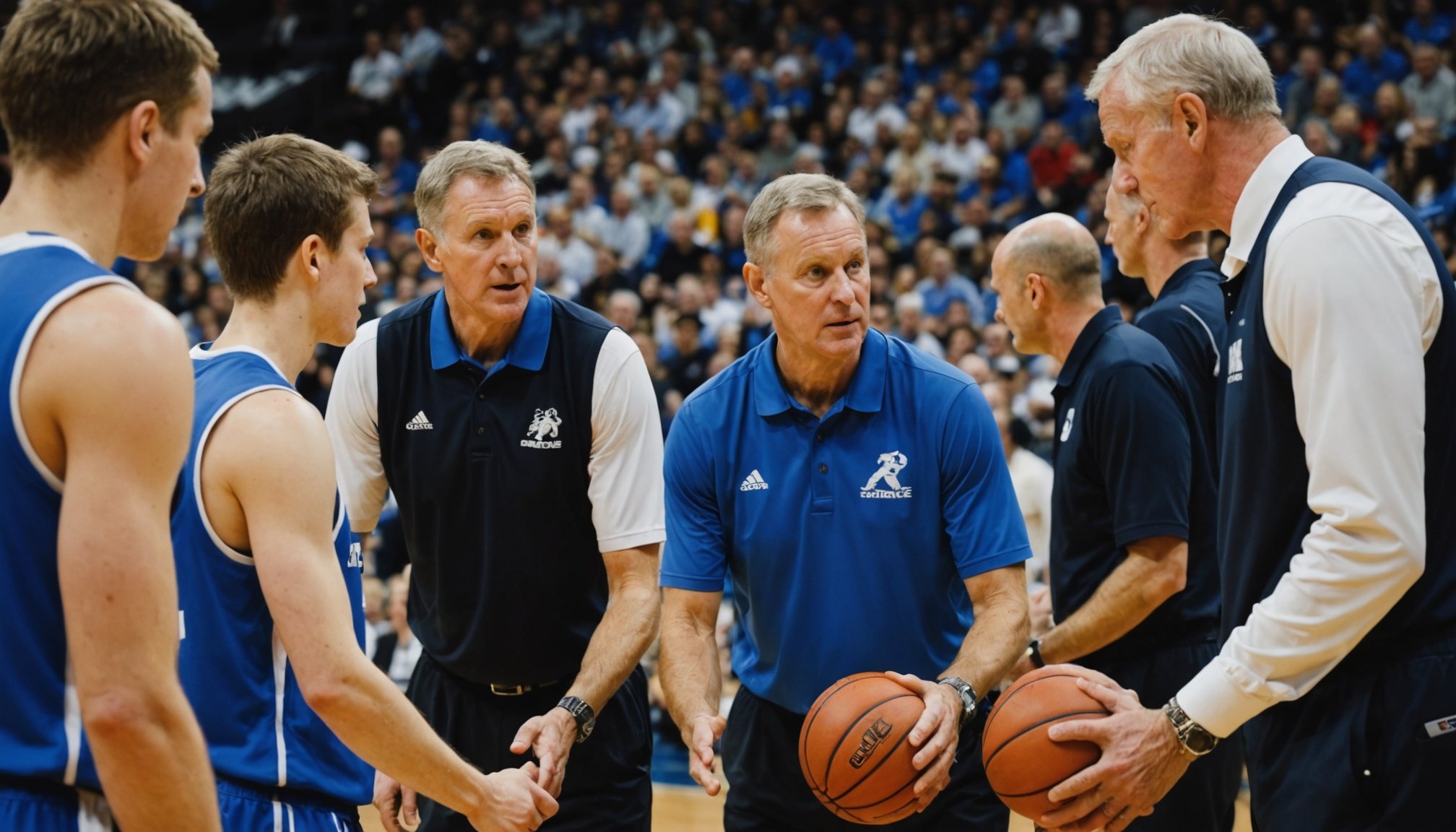Coaching multi-age basketball teams presents unique challenges and rewarding opportunities for UK coaches. Understanding diverse skill levels and fostering team cohesion requires adaptive strategies. This guide offers practical techniques to enhance communication, develop inclusive drills, and build strong relationships among players. Embrace these effective approaches to transform your coaching and maximize the potential of every athlete, regardless of age. Empower your team to achieve success together on and off the court.
Understanding Multi-Age Teams in Basketball
Multi-age basketball teams bring together players of different ages, creating a unique blend of team dynamics. This age diversity can be beneficial, as it allows younger players to learn from the experience of older teammates. It fosters a mentoring environment where skills and knowledge are passed down, enhancing the overall performance of the team.
Also to read : Exploring Post-Retirement Career Opportunities for UK Basketball Players: A Long-Term Perspective
Understanding the age differences in coaching is crucial for managing these teams effectively. Coaches must tailor their strategies to accommodate varying levels of physical development and maturity. This requires a keen awareness of each player's strengths and weaknesses, ensuring that all players feel valued and included, regardless of age.
However, there are unique challenges associated with coaching multi-age teams. Balancing the needs of younger players who may require more guidance with the expectations of older, more independent athletes can be complex. Coaches must also address potential social dynamics issues, such as age-related cliques, to maintain team cohesion.
Also read : Essential Considerations for Selecting the Perfect Basketball Camp for Young Players in the UK
To overcome these challenges, coaches should focus on fostering open communication and mutual respect within the team. By doing so, they can create a supportive environment where all players, regardless of age, can thrive and contribute to the team's success.
Effective Coaching Strategies for Multi-Age Teams
To successfully manage multi-age basketball teams, coaches must employ effective coaching strategies that cater to diverse player needs. By focusing on player engagement and tailored coaching, coaches can enhance team performance and individual development.
Adapting drills for various skill levels
Coaches should design drills that accommodate a range of abilities. This involves modifying exercises to challenge older players while providing achievable goals for younger ones. For instance, a shooting drill could have varying distances or targets, ensuring all players are engaged and improving their skills.
Creating inclusive practice sessions
Inclusive practice sessions are essential for fostering a sense of belonging among players. Coaches can achieve this by rotating team roles and ensuring everyone participates equally. This approach not only boosts player confidence but also promotes a supportive team atmosphere.
Balancing competition and collaboration among players
Striking a balance between competition and collaboration is crucial in multi-age teams. Coaches should encourage friendly competition to motivate players while emphasising teamwork and cooperation. By promoting collaborative activities, such as group challenges or team-building exercises, coaches can strengthen team bonds and enhance overall performance.
Communication Techniques for Diverse Age Groups
In multi-age basketball teams, establishing clear communication methods is vital. Coaches should create open channels where players feel comfortable expressing themselves. This can be achieved through regular team meetings and one-on-one sessions, allowing players to voice concerns and ideas.
When it comes to giving effective feedback, coaches must tailor their approach to suit different age groups. Younger players often benefit from positive reinforcement, highlighting their strengths before addressing areas for improvement. For older players, direct and constructive feedback can be more effective, focusing on specific skills and strategies.
Fostering relationships within the team is essential for building trust and rapport. Coaches can encourage team bonding through activities that promote interaction across age groups. This not only strengthens team dynamics but also helps players understand and appreciate each other's perspectives.
To further enhance communication, coaches should be mindful of their body language and tone. Demonstrating active listening by maintaining eye contact and nodding can make players feel heard and respected. By employing these communication techniques, coaches can create a supportive environment where players of all ages feel valued and motivated to contribute to the team's success.
Motivational Techniques for Multi-Age Players
Ensuring high team morale and consistent player motivation in multi-age teams requires thoughtful strategies. Coaches must address both collective and individual needs to maintain enthusiasm and drive.
Setting collective and individual goals
Establishing clear goals is crucial for motivating players. Coaches should set collective goals that inspire teamwork, such as improving overall game performance or achieving a specific number of wins. Alongside these, individual goals tailored to each player's abilities and aspirations can boost personal motivation. This dual approach ensures that all players feel invested in the team's success while pursuing personal growth.
Celebrating achievements and progress
Recognising and celebrating achievements is a powerful motivator. Coaches should acknowledge both team accomplishments and individual milestones, fostering a sense of pride and accomplishment. This can be done through awards, shout-outs during practice, or even a simple word of praise. Celebrating progress keeps players motivated and reinforces their commitment to the team's objectives.
Creating a positive team culture
A positive team culture is essential for sustaining motivation. Coaches can cultivate this by promoting inclusivity, respect, and support among players. Encouraging open communication and mutual respect helps create an environment where players feel valued and motivated to contribute. A positive culture not only boosts morale but also enhances overall team performance.
Practical Drills and Activities for Mixed Age Groups
In multi-age basketball teams, implementing basketball drills that cater to diverse skill levels is essential for effective skill development. Coaches can design drills that are adaptable, ensuring all players, regardless of age, are challenged and engaged. For instance, a passing drill can be modified by adjusting the distance between players or incorporating obstacles to increase difficulty for older players while maintaining simplicity for younger ones.
Engaging activities are crucial in promoting teamwork and skill sharing among players. Coaches can organise group challenges that require collaboration, such as relay races or obstacle courses, which encourage players to work together and learn from each other. These activities foster a sense of unity and help players develop a deeper understanding of each other's strengths and weaknesses.
Incorporating fun elements into drills and activities is vital for maintaining player engagement. Coaches can introduce friendly competitions or themed practice sessions that keep players motivated and excited. By creating a lively and enjoyable practice environment, coaches can ensure that players remain enthusiastic and committed to improving their skills while building strong team bonds.
Case Studies and Testimonials from UK Coaches
Exploring the coaching experiences of UK basketball coaches provides valuable insights into managing multi-age teams. Through real-life examples, we can see the practical application of strategies discussed earlier.
Success stories from multi-age coaching
Several UK coaches have shared success stories highlighting the benefits of multi-age teams. For instance, one coach noted that younger players gained confidence by learning from their older teammates, resulting in improved overall performance. The blend of youthful energy and seasoned experience created a dynamic team environment, fostering growth and success.
Lessons learned from challenges faced
Despite successes, UK coaches have faced challenges in managing multi-age teams. A common issue is balancing the differing maturity levels. One coach recounted a situation where age-related cliques formed, impacting team cohesion. By addressing this openly and promoting inclusivity, the coach successfully reunited the team.
Recommendations and tips from experienced coaches
Experienced UK coaches recommend focusing on communication and adaptability. They suggest holding regular feedback sessions to ensure all players feel heard. Additionally, tailoring drills to suit varying skill levels has proven effective. Coaches emphasise the importance of fostering a supportive atmosphere, ensuring each player, regardless of age, feels valued and motivated.











